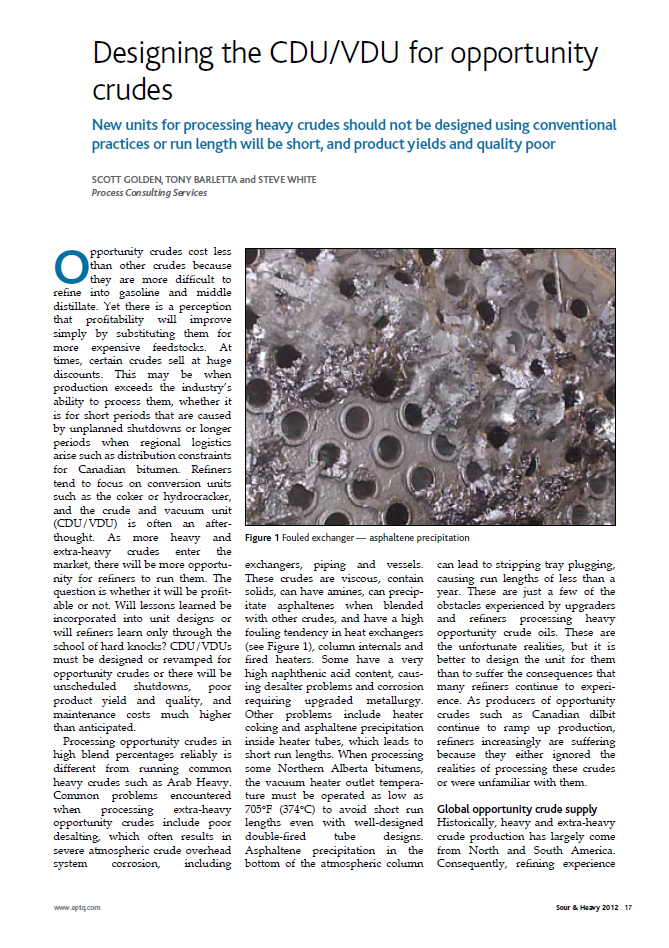Designing the CDU/VDU for Opportunity Crudes
SUMMARY
New units for processing heavy crudes should not be designed using conventional practices or run length with be short, and product yields and quality poor.
TEXT
Opportunity crudes cost less than other crudes because they are more difficult to refine into gasoline and middle distillate. Yet there is a perception that profitability will improve simply by substituting them for more expensive feedstocks. At times, certain crudes sell at huge discounts. This may be when production exceeds the industry’s ability to process them, whether it is for short periods that are caused by unplanned shutdowns or longer periods when regional logistics arise such as distribution constraints for Canadian bitumen. Refiners tend to focus on conversion units such as the coker or hydrocracker, and the crude and vacuum unit (CDU/VDU) is often an afterthought. As more heavy and extra-heavy crudes enter the market, there will be more opportunity for refiners to run them. The question is whether it will be profitable or not. Will lessons learned be incorporated into unit designs or will refiners learn only through the school of hard knocks? CDU/VDUs must be designed or revamped for opportunity crudes or there will be unscheduled shutdowns, poor product yield and quality, and maintenance costs much higher
than anticipated.
Processing opportunity crudes in high blend percentages reliably is different from running common heavy crudes such as Arab Heavy. Common problems encountered when processing extra-heavy opportunity crudes include poor desalting, which often results in severe atmospheric crude overhead system corrosion, including New units for processing heavy crudes should not be designed using conventional practices or run length will be short, and product yields and quality poor exchangers, piping and vessels...

